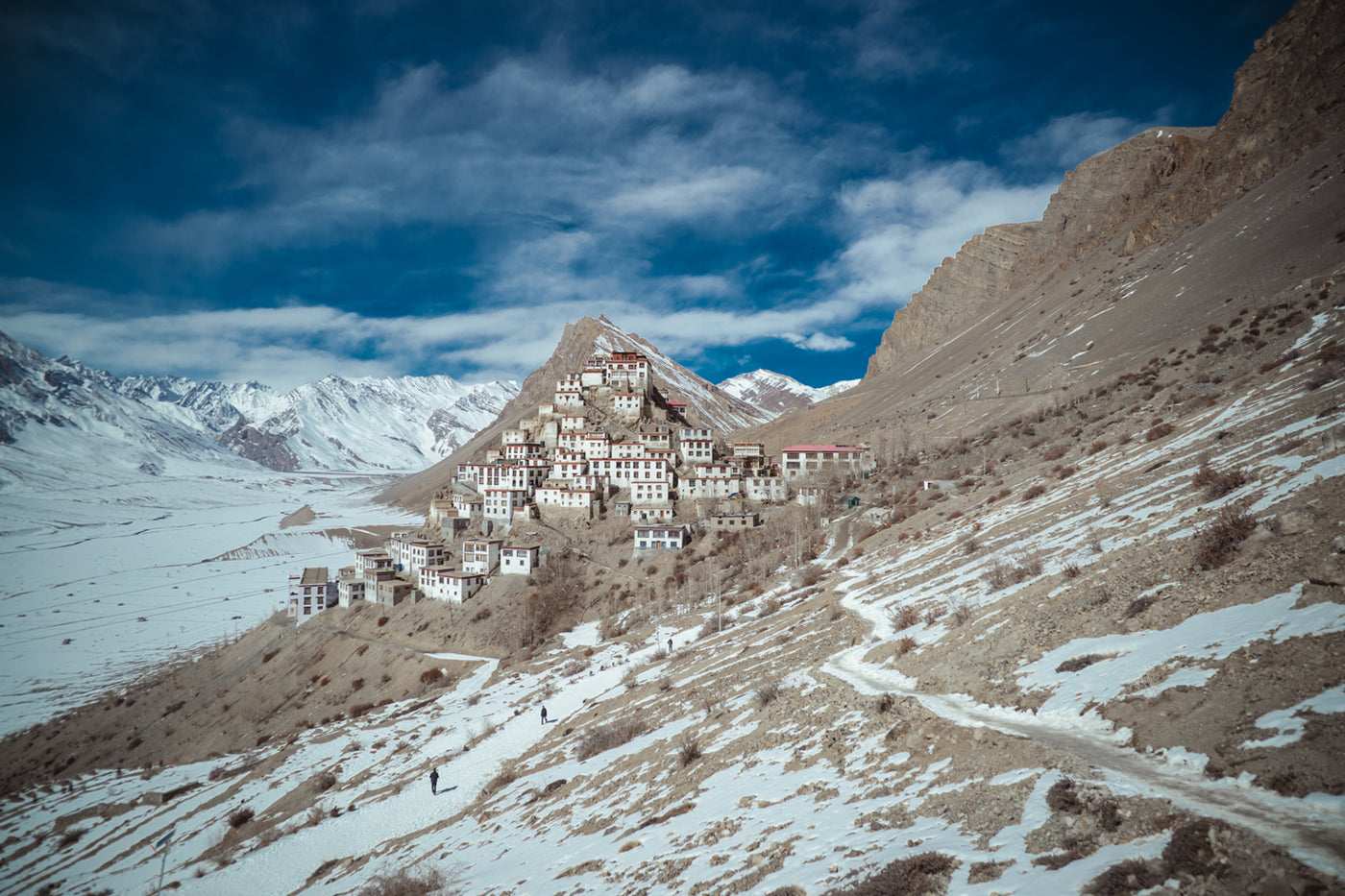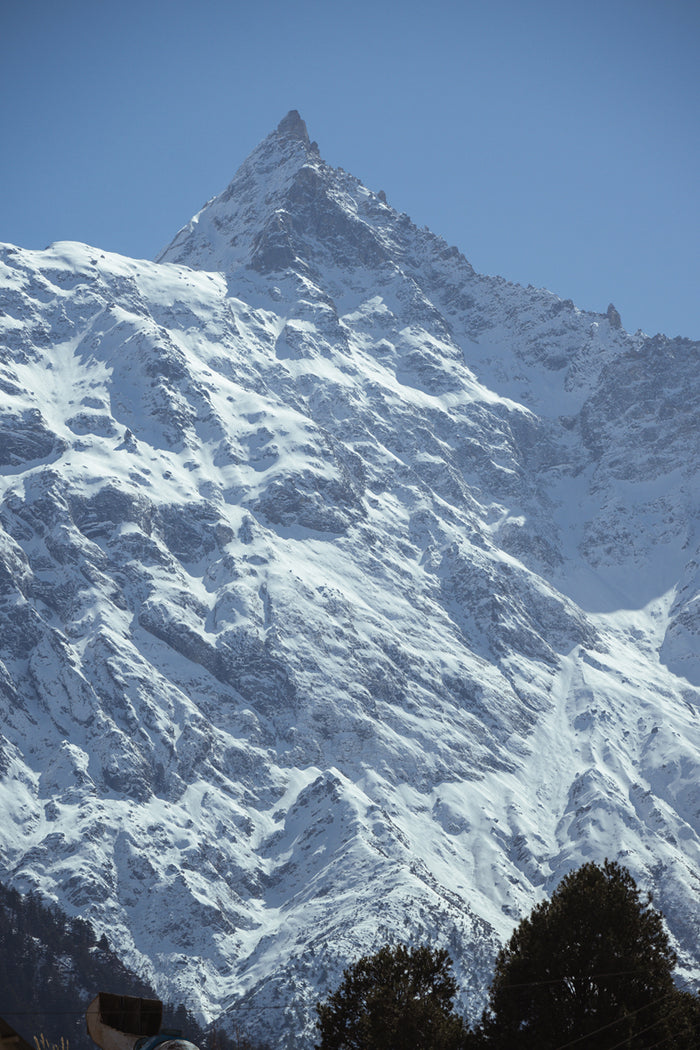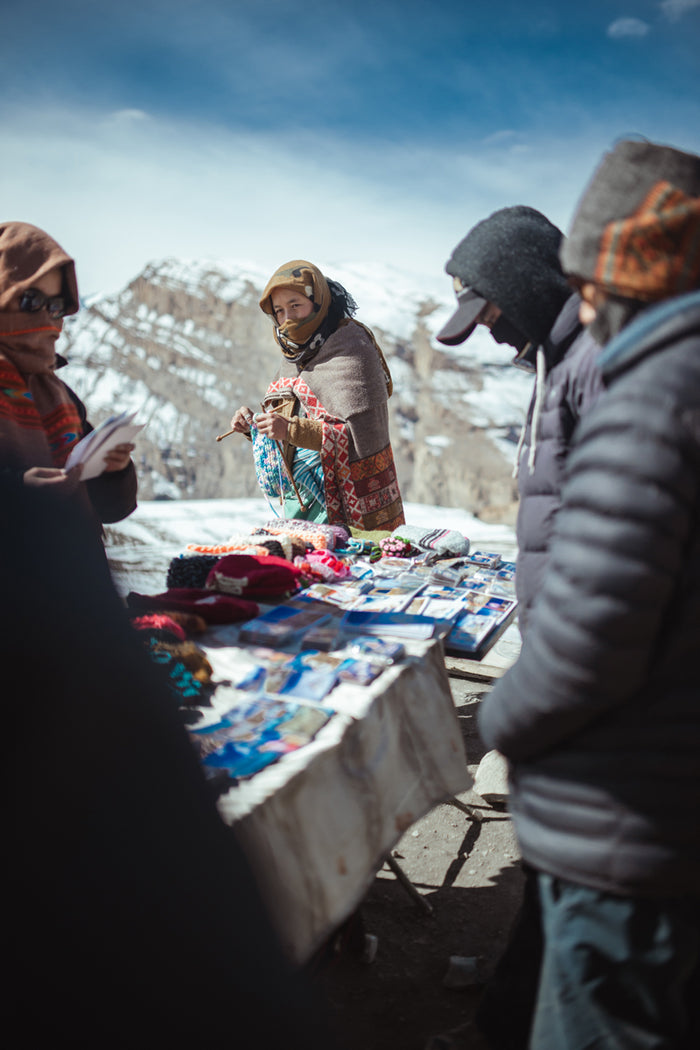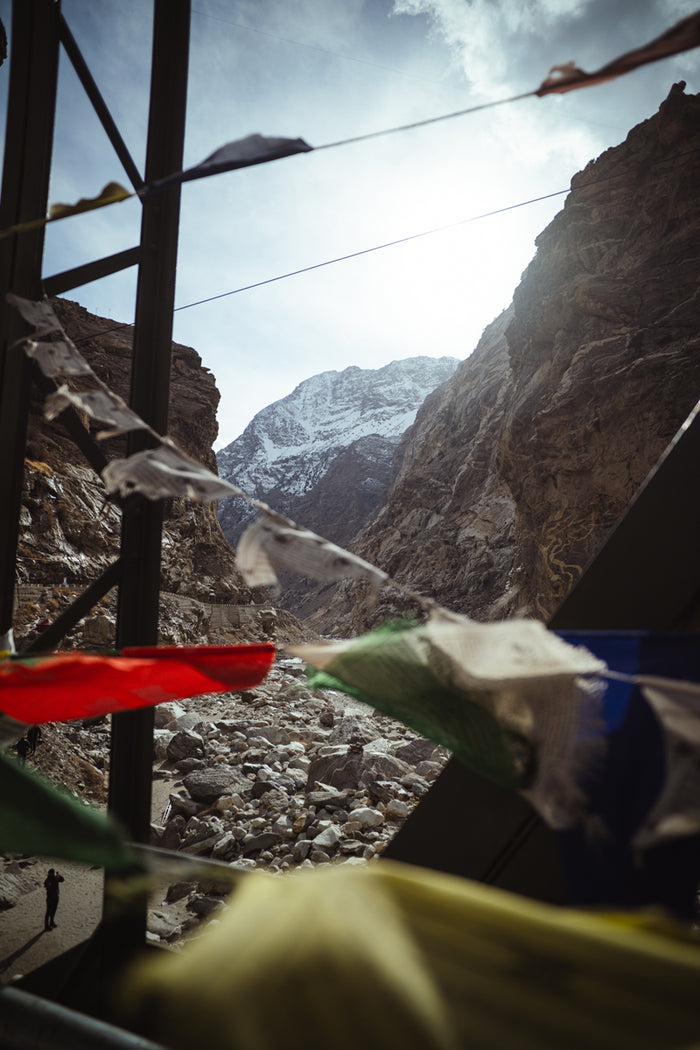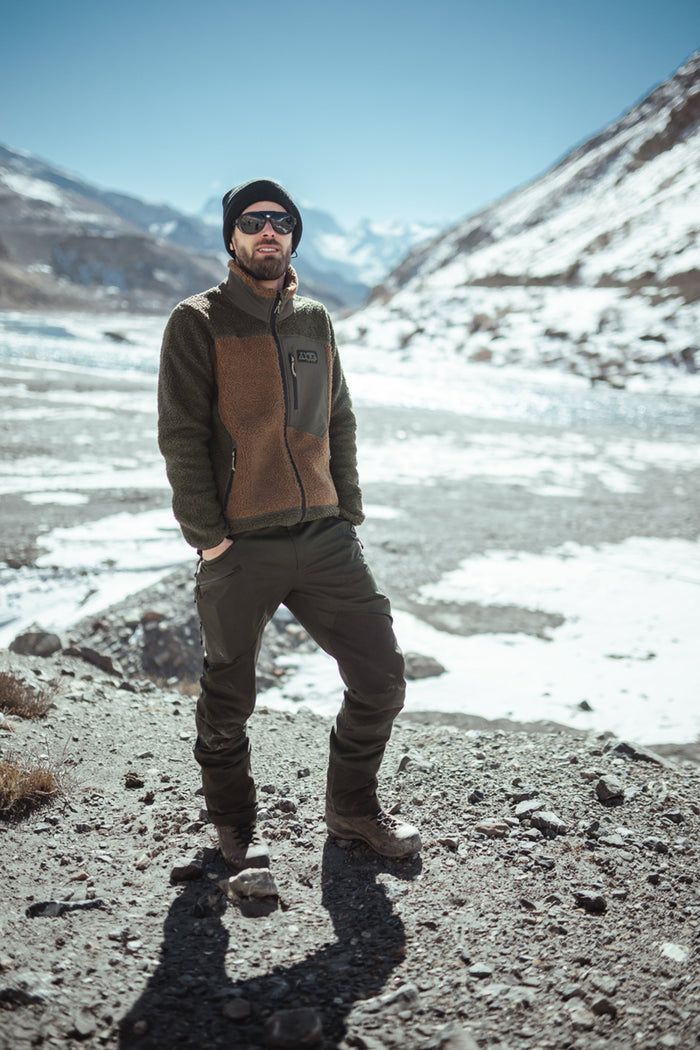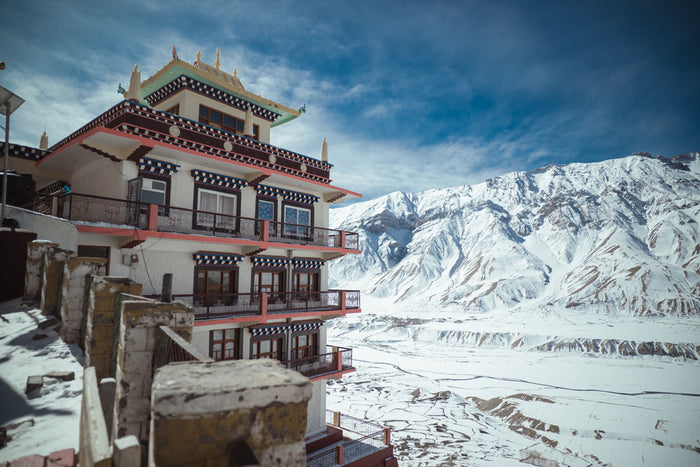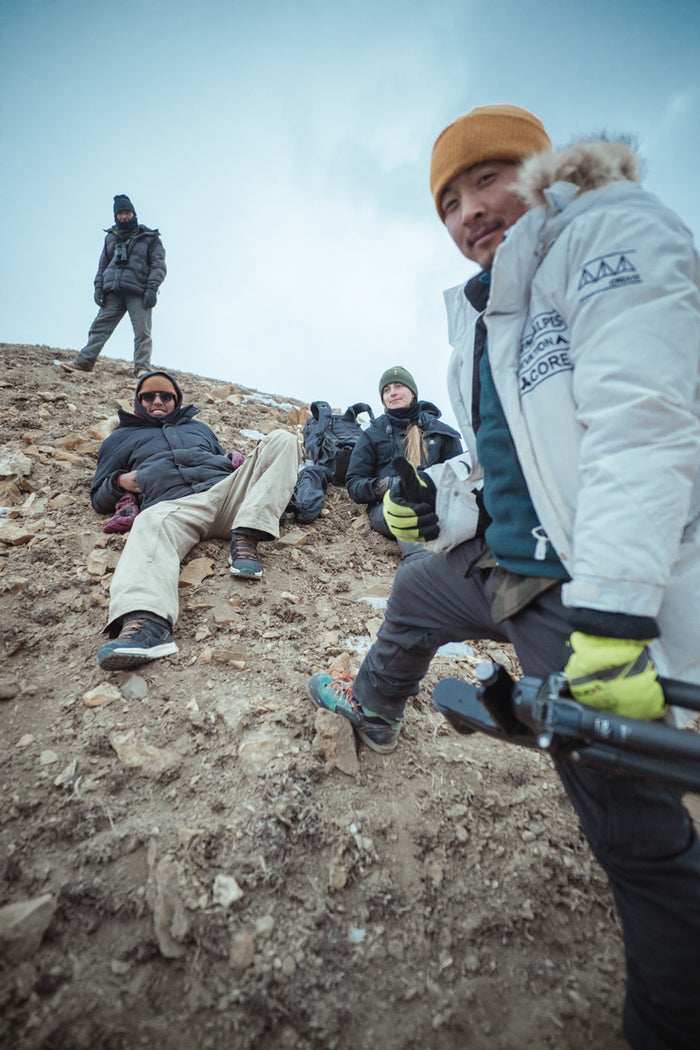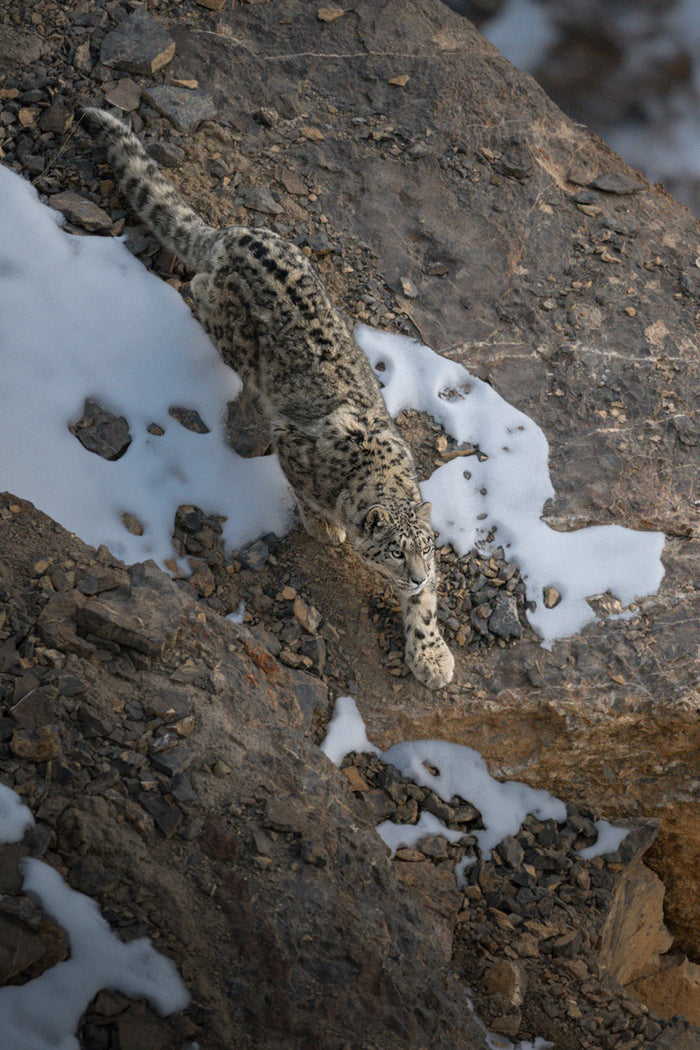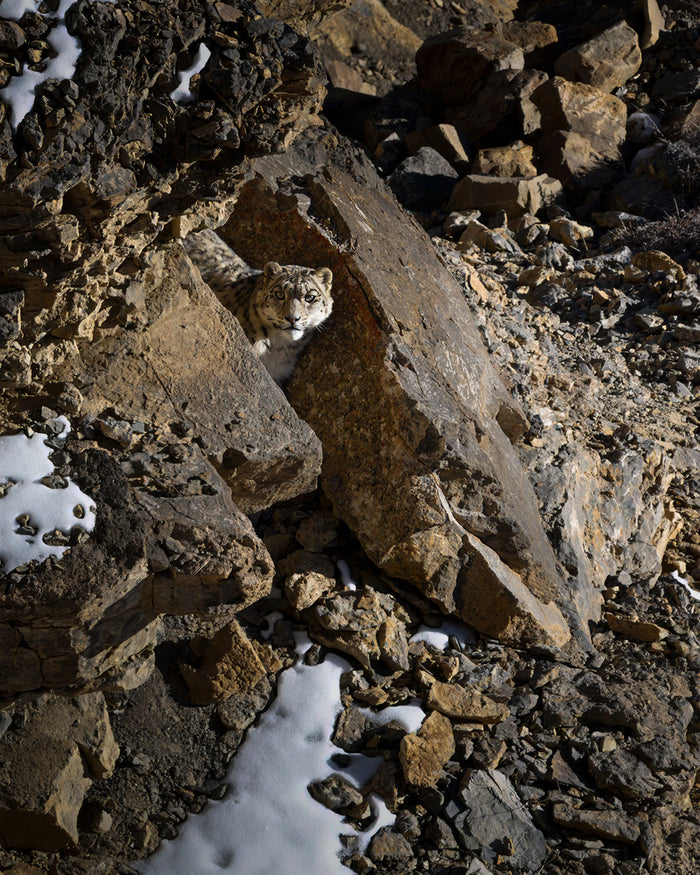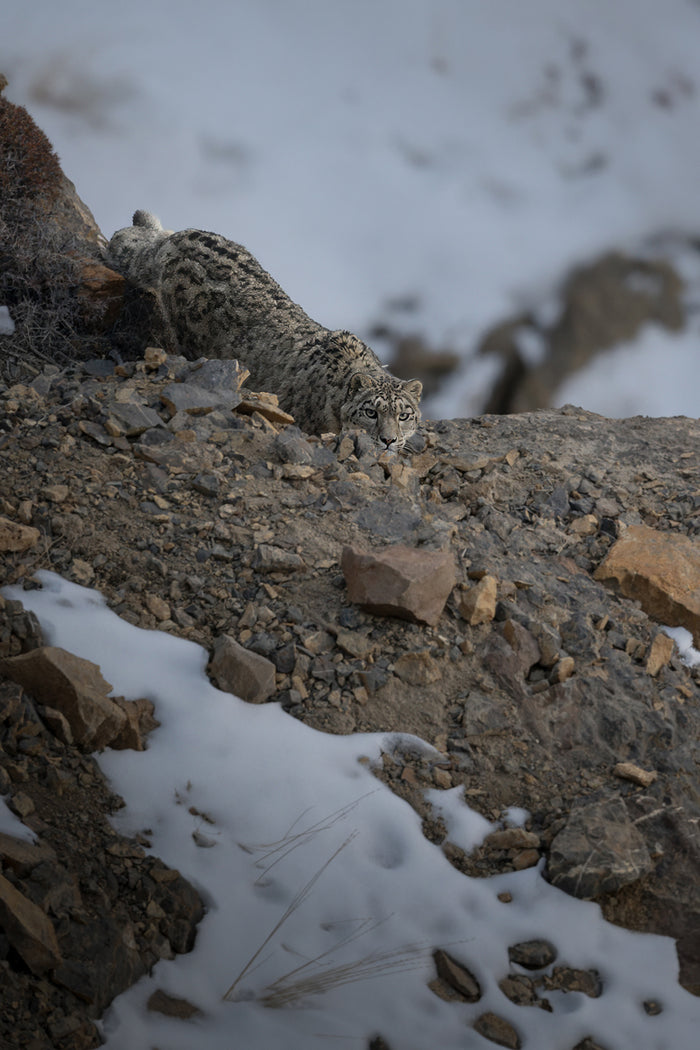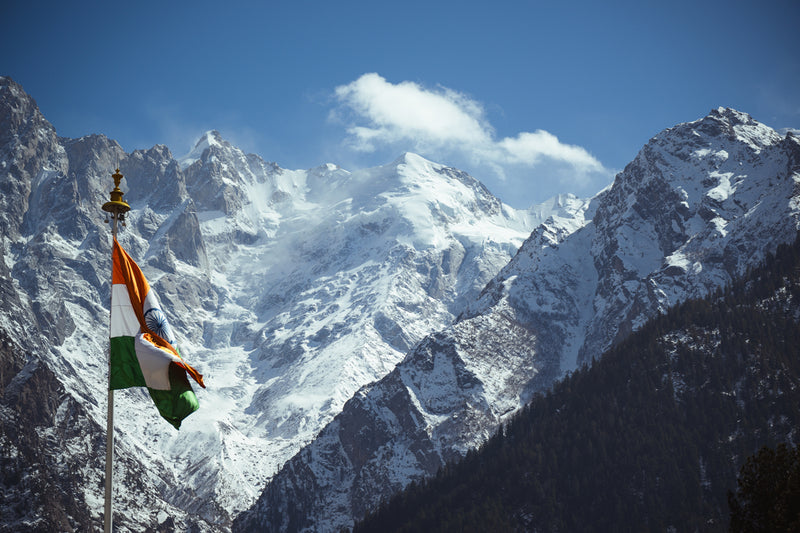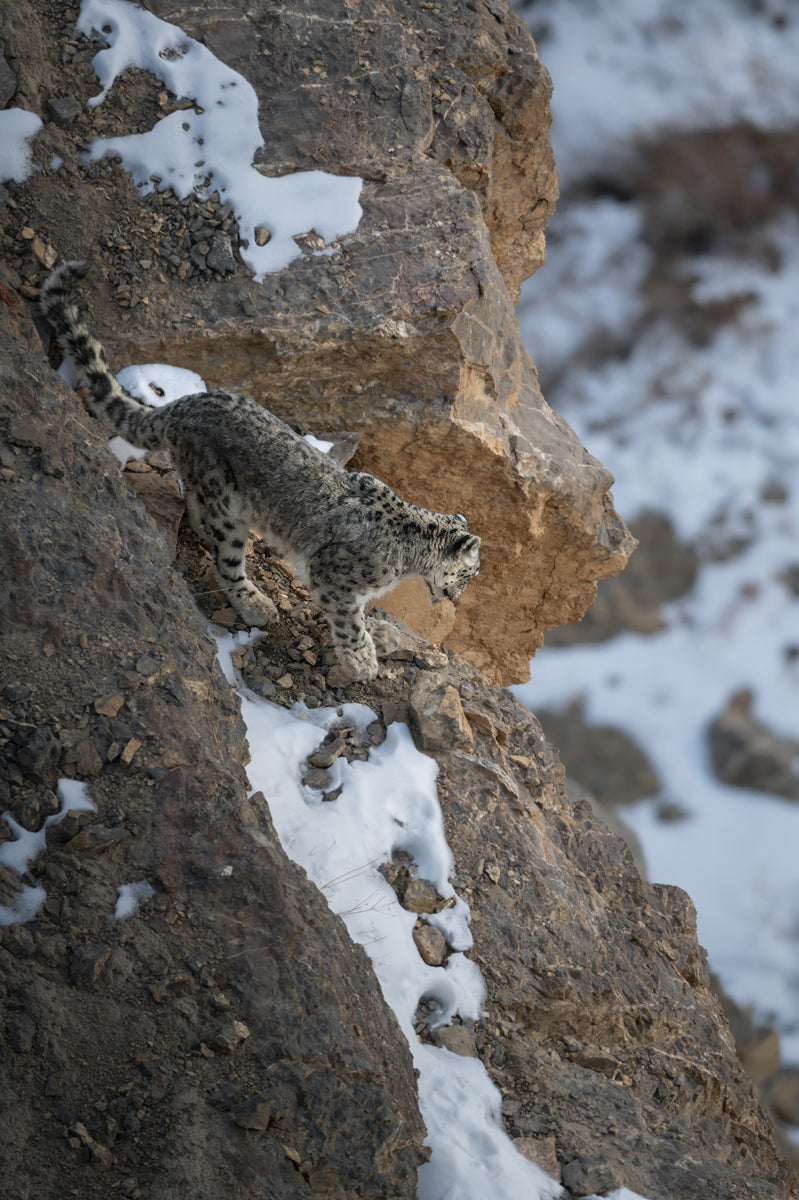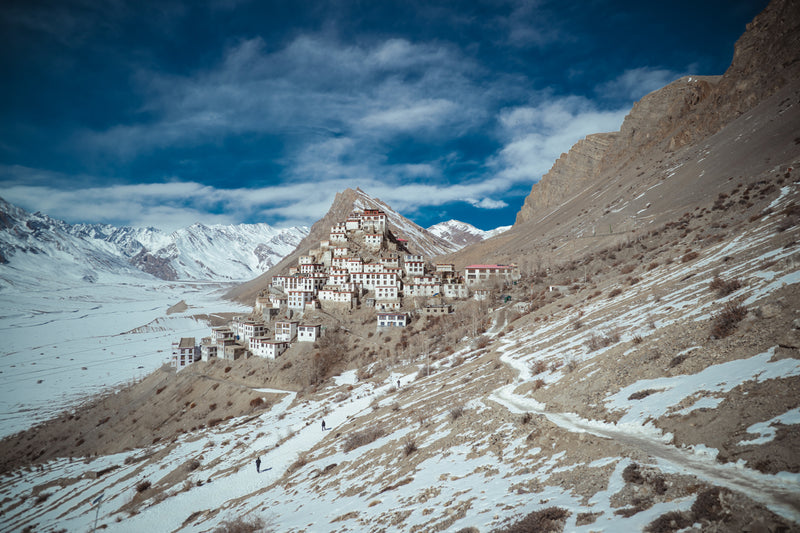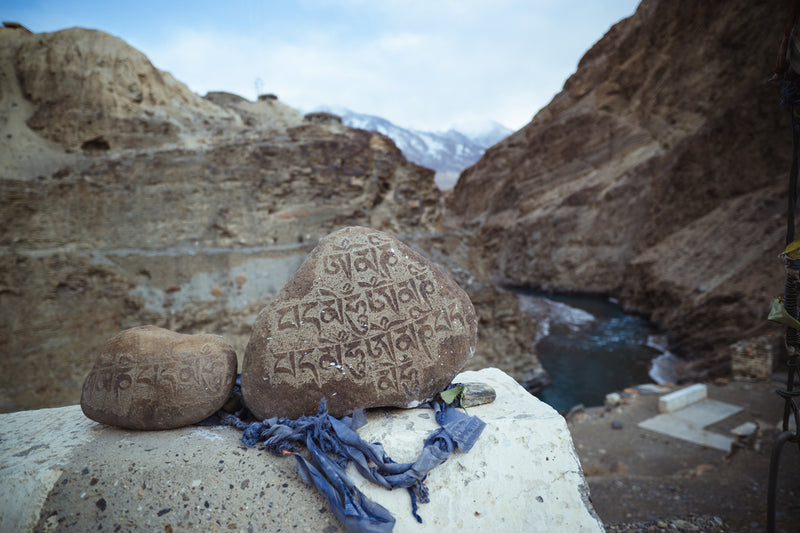Some journeys begin with an image, not a destination. For me, it was a gaze: that of the snow leopard, Panthera uncia , silent predator of the Himalayas, invisible lord of the peaks . Seeing it was no guarantee, but a gamble with luck, patience, and the cold. We crossed the Spiti Valley by jeep, for days on end, tossed along roads carved into the rock, past seemingly endless cliffs and unique panoramas, with mountains only above 5,500 meters . Every hairpin bend was a defiance of gravity, every kilometer a slow acclimatization not only to the altitude, but to a completely different way of life. Here, your breath becomes short, your head light, your thoughts slow; living at 4,500 meters is a constant challenge .
Spiti doesn't forgive, but teaches. Survival takes place in small Tibetan villages at over 4,500 meters , in houses built using makeshift materials, where in winter there's no running water, only ice. At night, the cold enters the rooms, where you can enjoy the warmth of the fire for only a few hours a day, causing you to wake up to temperatures below freezing . The lack of oxygen forces you to slow down: even putting on your socks is a conscious act, conserving energy is essential for staying focused, and staying hydrated is the only defense against altitude sickness.
The sun was still high, filtering through the rocky ridges and painting the valley walls copper. We were observing the steep ridge below us when the guide pointed out something, with that confident calm that leaves no room for doubt. Absolutely nothing could be seen between the rocks, but our Indian friend was certain: two silhouettes, motionless, perfectly blended with the landscape. Two snow leopards. It's hard to explain what it feels like. The beauty was there, alive, immersed in the silence of those cold, wild mountains. Looking at them through the camera, with its 1200mm super telephoto lens, made every detail clearer: enormous, disproportionate paws, designed to float on the snow, a long, bushy tail, and incredibly textured fur. The snow leopard moves across extreme precipices, with a constant awareness of danger , but also with absolute mastery of its body and that astonishing sense of balance that makes it unique.

Jonathan Giovannini
"For me, being a wildlife photographer means entering into symbiosis with the natural world, respecting it and representing it in its purest state."
The snow leopard is a master of adaptation . It lives at prohibitive altitudes, where the air is thin and temperatures drop to -35°C. Its long tail, thick fur, and incredible ability to camouflage itself make it almost invisible. A shadow among shadows . It preys on ibex, blue sheep, and other animals perfectly adapted to this extreme environment. It wastes nothing: every movement is measured, every choice is geared toward survival. Like everyone here. These mountains are not just home to animals, but also to people who face harsh conditions with surprising spirit . They live with little, adapting to everything, with authentic strength and positivity.
Small villages dotted across the mountainsides, inhabited by communities of shepherds and Buddhist monks , resist time and climate with a calm that we Westerners struggle to comprehend. Cold houses, smoky kitchens, and prayers that mark the time. In these cultures, the snow leopard is not an enemy, but rather part of the sacred balance . Sometimes yaks or herded goats are preyed upon, but no one seeks revenge. The loss is considered an offering, a natural sacrifice of religious significance. The tales of the elders speak of the leopard as a spiritual being . An elusive presence, protector of the mountains, a symbol of strength and mystery. Perhaps this is precisely why seeing it, even for just a moment, fills one with emotions difficult to experience elsewhere.
Returning to the valley is not just a geographical journey . It's a descent into another rhythm, another way of surviving. Spiti Valley has left us something that cannot be packaged: the awareness that the true conquest is not the sighting, but the journey itself. That we don't always travel to see ; sometimes we travel to understand and to challenge our own capabilities, sacrificing the habits and extreme comforts of the 21st century. Or perhaps, to learn to disappear, just like the leopard in the snow .


